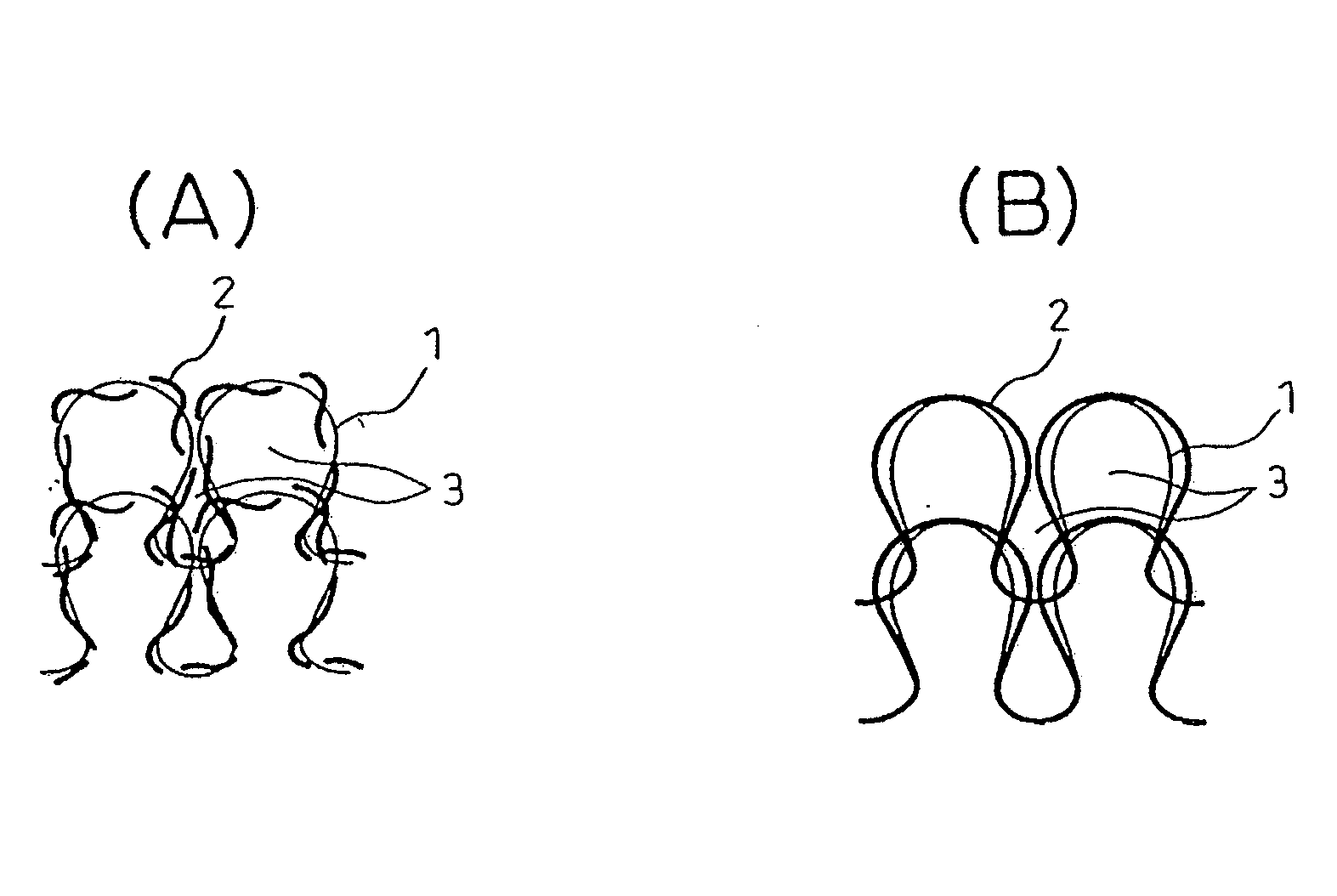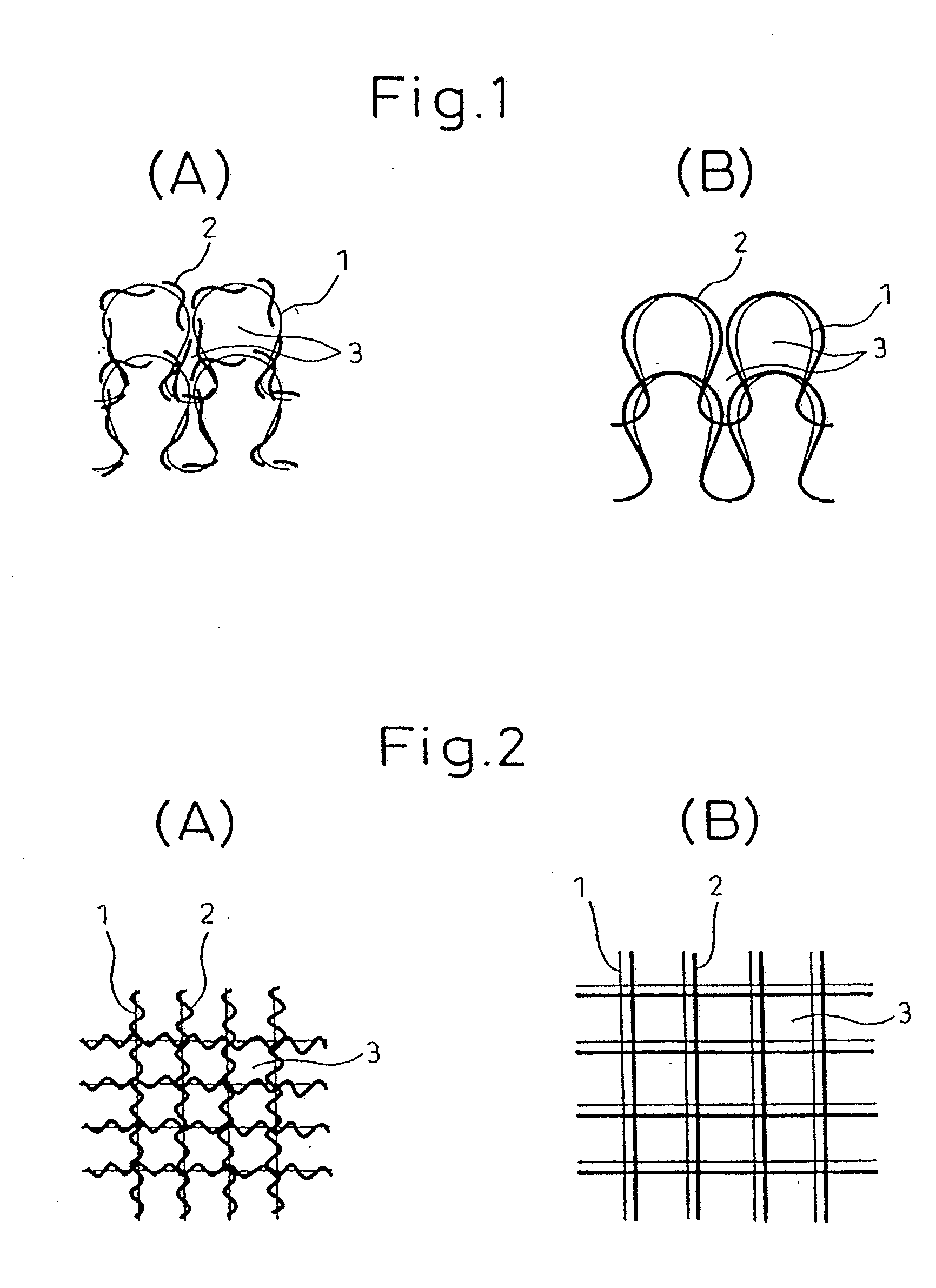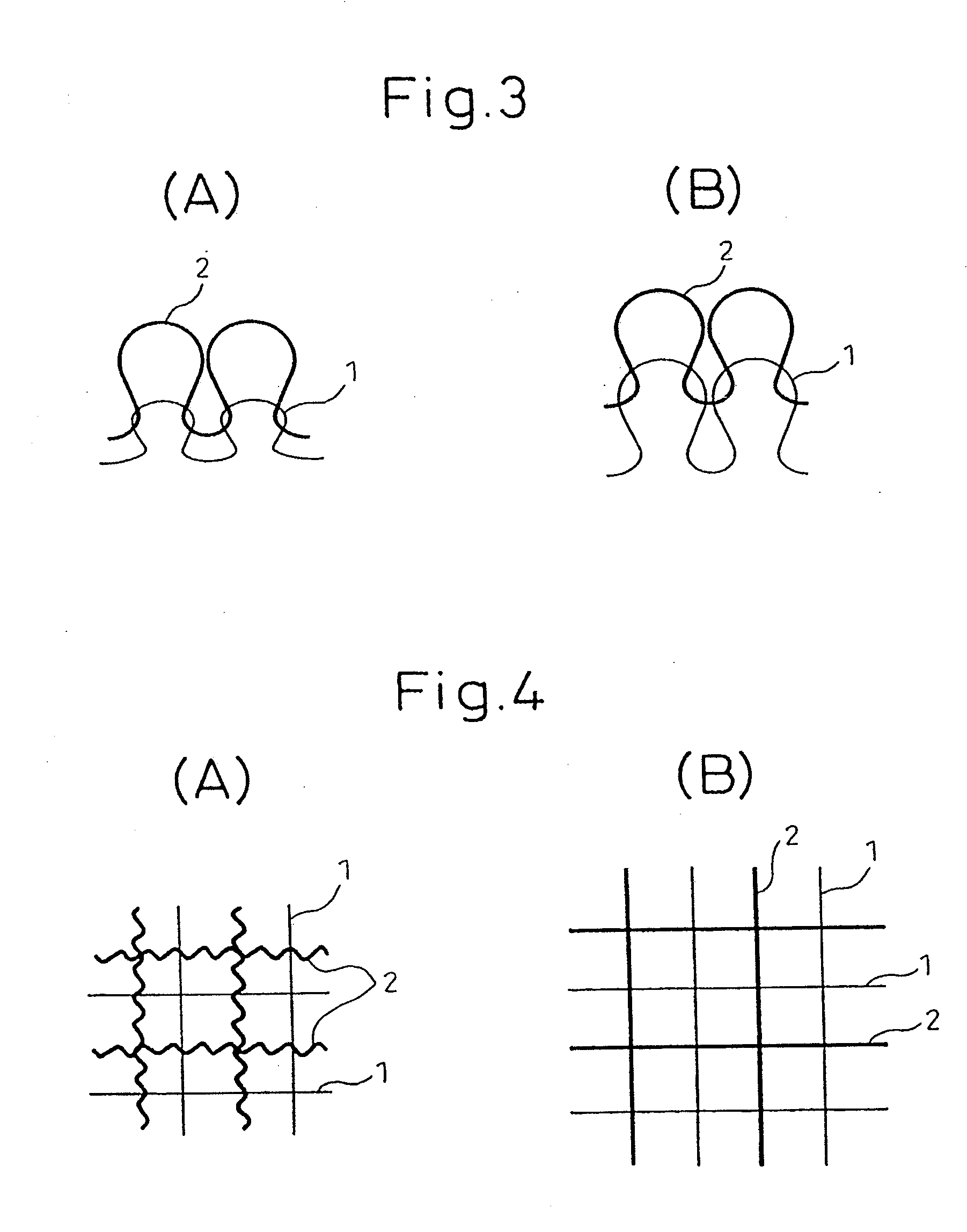Woven or knitted fabric containing two different types of yarns and clothing containing the fabric
a technology of woven or knitted fabric and yarn, which is applied in the direction of knitting, ornamental textile articles, weaving, etc., can solve the problems of small inferior air permeability, and uncomfortable feeling, so as to facilitate the air permeability of the fabric, reduce the amount of deformation in the fiber configuration, and minimize the change in the dimension and configuration of the fabric
- Summary
- Abstract
- Description
- Claims
- Application Information
AI Technical Summary
Benefits of technology
Problems solved by technology
Method used
Image
Examples
example 1
[0156]A polyetherester polymer consisting of 49.8 parts by mass of hard segments formed from polybutylene terephthalate and 50.2 parts by mass of soft segments formed from polyoxyethylene glycol having a number-average molecular weight of 4,000 was melted at 230° C. and the resultant melt was extruded through a spinneret for spinning a monofilament at an extrusion rate of 3.05 g / min. Streams of this melt-extruded polymer were taken up through two godet rollers at a speed of 705 m / min and then wound at a speed of 750 m / min (so that a winding draft is 1.06), resulting in an elastic yarn (1) having a high water-absorbing and self-elongating property and a yarn count of 44 dtex / one filament. The self-elongation of this yarn (1) upon absorbing water was 10% in the axial direction of the filament, and the shrinkage thereof in boiling water was 8%.
[0157]Also, a conventional polyethylene terephthalate multifilament yarn (84 dtex / 24 filaments) having a shrinkage of 10% in boiling water and a...
example 2
[0159]A covered yarn (composite yarn) was produced from a core yarn consisting of the yarn (1) having a high water-absorbing and self-elongating property which is the same that as used in Example 1, and a sheath yarn consisting of the yarn (2) formed from polyethylene terephthalate multifilament (33 dtex / 12 filaments) having a shrinkage of 10% in boiling water and a self-elongation of 1% in a wet state, at a draft of the core yarn of 30% (1.3 times), with the number of turnings of the sheath yarn of 350 / m (in the Z direction). The covered yarn a and a polyethylene terephthalate multifilament yarn b (84 dtex / 72 filaments) having a shrinkage in boiling water of 8% and a self-elongation of 1% or less were fed to a 24 gauge double circular knitting machine to produce a knitted fabric having a knitting structure as shown in FIG. 8 at densities of 38 courses / 2.54 cm and 32 wales / 2.54 cm. This knitted fabric was subjected to the dyeing and finishing treatment. A ratio A / B in mean yarn leng...
PUM
| Property | Measurement | Unit |
|---|---|---|
| temperature | aaaaa | aaaaa |
| elongation at break | aaaaa | aaaaa |
| pressure | aaaaa | aaaaa |
Abstract
Description
Claims
Application Information
 Login to View More
Login to View More - R&D
- Intellectual Property
- Life Sciences
- Materials
- Tech Scout
- Unparalleled Data Quality
- Higher Quality Content
- 60% Fewer Hallucinations
Browse by: Latest US Patents, China's latest patents, Technical Efficacy Thesaurus, Application Domain, Technology Topic, Popular Technical Reports.
© 2025 PatSnap. All rights reserved.Legal|Privacy policy|Modern Slavery Act Transparency Statement|Sitemap|About US| Contact US: help@patsnap.com



